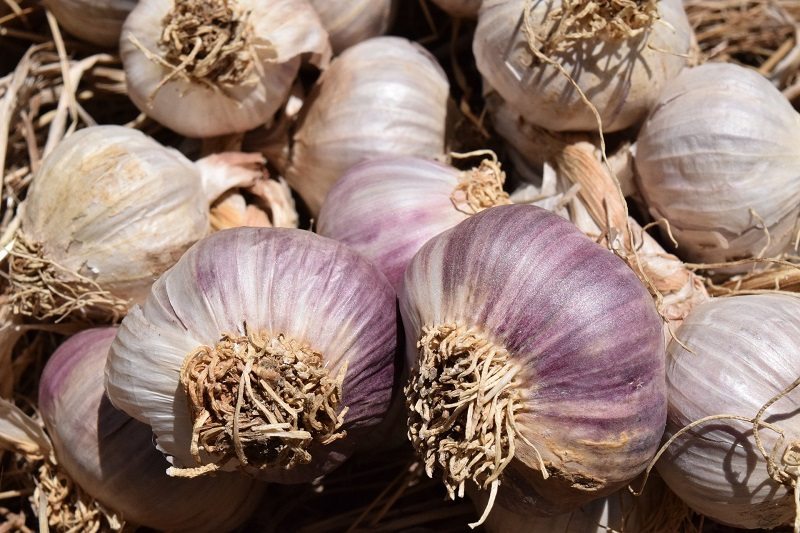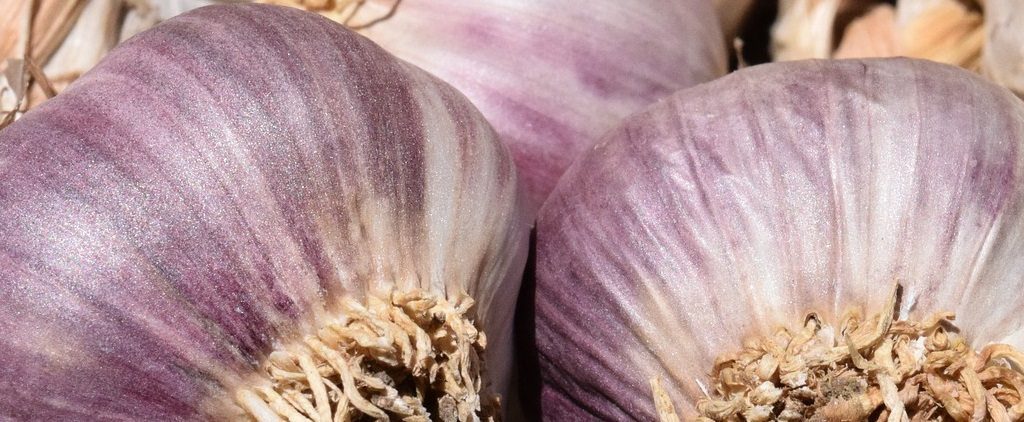[dropcap style=”font-size:100px; color:#992211;”]T[/dropcap]his Brexit thing just gets better and better.
Just days after the UK’s finest cyclist rubs those overcheesed gallic traditionalists’ noses in the proverbial merde by demonstrating the art of bike-free cycle racing, it now turns out that, in a post-EU roast beef and Yorkshire pud Britain, even our suckling babies will be safe from the perfidy of That Muck They Call Food.
Garlic-eating mothers POISON their own children with putrid Euro-garlicky breastmilk.
FACT!
We’ll, ahem, gloss over the whole men and pineapple thing, shall we?
Food chemists at Friedrich-Alexander-Universität Erlangen-Nürnberg (FAU) have found that garlic aroma is evident in the breast milk of women who have consumed garlic. This is caused by allyl methyl sulfide (AMS) – a metabolite which is first formed in a strong concentration during breastfeeding. Whether the aroma has an impact on which food preferences children develop and whether they like garlic in later life needs to be clarified by further research. The results of the study have now been published in the online journal Metabolites published by the Multidisciplinary Digital Publishing Institute (MDPI).*
That breast milk is the best food for infants is undisputed. But what is it about the benefits of breast milk that are claimed to prevent diseases and allergies, or influence eating habits? ‘There are many myths about breast milk,’ says Prof. Dr. Andrea Büttner from the Division of Food Chemistry. ‘However, we still know very little about the impact of food consumed by mothers on their infants’ diets later in life. Some researchers suggest that children prefer those foods that their mothers consume during breastfeeding, because they suggest that the milk tastes the same or at least similar.’
Büttner’s research group has been working for many years on how aromas are processed by the human metabolism. With regard to the impact on the mother’s milk, Büttner’s findings are rather more conservative, as some aromas are very unstable and can be metabolised in the human body to derivatives that have little to do with the original food. Büttner’s team has demonstrated in earlier studies that fish oil and nursing tea do not change the aroma profile of breast milk. Eucalyptus capsules, which are sometimes taken for colds during breast feeding, can however give the milk a significant eucalyptus aroma. Interestingly, not just the original aroma eucalyptol is found in the milk, but also a variety of derivatives, which are first formed in the mother’s body.
AMS causes garlic aroma in breast milk
This seems to be similar with garlic. In a recent study, the food chemists at FAU examined the milk of breast feeding mothers who had eaten raw garlic an average of 2.5 hours earlier. First, the milk was analysed in a sensory test by olfactory experts who found a garlic and cabbage-like odour in the samples. Subsequently, the milk aroma was split into its components using gas chromatography, and metabolites were detected that are clearly from the garlic: allyl methyl sulfide (AMS), allyl methyl sulfoxide (AMSO) and allyl methyl sulfone (AMSO2). Simultaneously, the metabolites were checked by olfactory experts and it was found that the AMS exudes a garlic-like aroma – the other derivatives were odourless.
Can the consumption of garlic influence the subsequent eating habits of infants? ‘We cannot answer this question at present,’ explains Andrea Büttner. ‘AMS is definitely not the same as the original garlic aroma. It is generally an interesting finding of our research that derivatives of aromas are also found in breast milk, which are different to their original form in the food consumed. So far, research has focused on the smell, however there are many more effects of such derivatives on the health and development of infants which are still largely unexplored. In addition, the effect of certain substances in food could be generally overestimated as the mother’s body also has a protective function which can break down less beneficial substances. It is often forgotten that even natural aromas are not necessarily healthy.’
Bodies and kitchens also transport aromas
In connection with the discussion about the properties of human milk, Andrea Büttner also indicates that there are other aroma carriers that may influence the development of infants: ‘We need to consider that the transfer of aromas in breast milk is limited, but odours from other social contexts such as from the mother’s body or food preparation could exert a much stronger effect. People can often remember childhood experiences through smell and the aromas of parents baking cakes or a favourite meal being prepared is one of the most formative experiences. In relation to social learning of odours and aromas there is still a great need for research.’ It is of no concern that the garlic aroma could cause infants to reject breast milk – another study has already shown a stimulating effect – infants actually drank more milk when their mothers consumed garlic.
Source: Eurekalert/University of Erlangen-Nuremberg
Image: Pixabay/Ulleo

Some of the news that we find inspiring, diverting, wrong or so very right.




















